
William Frederick Friedman was a US Army cryptographer who ran the research division of the Army's Signal Intelligence Service (SIS) in the 1930s, and parts of its follow-on services into the 1950s. In 1940, subordinates of his led by Frank Rowlett broke Japan's PURPLE cipher, thus disclosing Japanese diplomatic secrets before America's entrance into World War II.
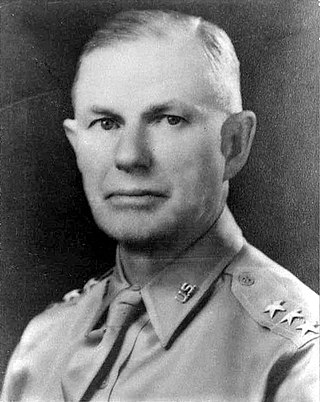
Walter Campbell Short was a lieutenant general and major general of the United States Army and the U.S. military commander responsible for the defense of U.S. military installations in Hawaii at the time of the Japanese attack on Pearl Harbor on December 7, 1941.

Joseph Oswald Mauborgne co-invented the one-time pad with Gilbert Vernam of Bell Labs. In 1914 he published the first recorded solution of the Playfair cipher. Mauborgne became a Major General in the United States Army, and from October 1937 to his retirement in 1941 was the Army's 12th Chief Signal Officer, in command of the Signal Corps.
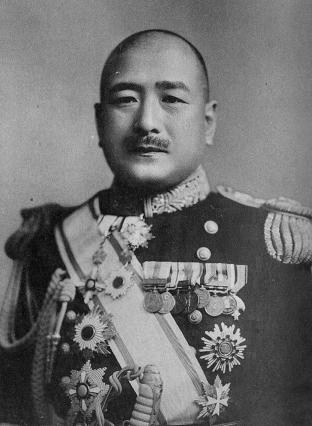
Shigetarō Shimada was an admiral in the Imperial Japanese Navy during World War II. He also served as Minister of the Navy. He was convicted of waging aggressive war and sentenced to life imprisonment.
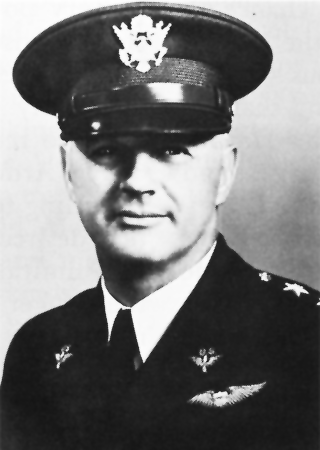
Delos Carleton Emmons was a lieutenant general in the United States Army. He was the military governor of Hawaii in the aftermath of the Attack on Pearl Harbor and administered the replacement of normal U.S. banknotes with special war-emergency US banknotes in case the islands were invaded. He is credited with preventing the mass evacuation of Japanese-Americans from Hawaii, which many have called a shameful episode of racism and jingoism that was felt hardest on the mainland.
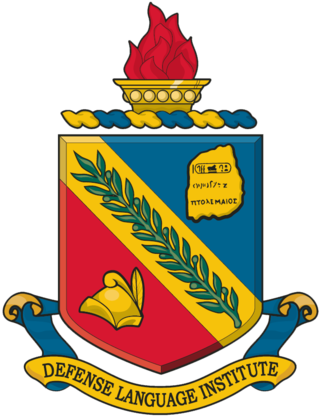
The Defense Language Institute (DLI) is a United States Department of Defense (DoD) educational and research institution consisting of two separate entities which provide linguistic and cultural instruction to the Department of Defense, other federal agencies and numerous customers around the world. The Defense Language Institute is responsible for the Defense Language Program, and the bulk of the Defense Language Institute's activities involve educating DoD members in assigned languages, and international personnel in English. Other functions include planning, curriculum development, and research in second-language acquisition.
OP-20-G or "Office of Chief Of Naval Operations (OPNAV), 20th Division of the Office of Naval Communications, G Section / Communications Security", was the U.S. Navy's signals intelligence and cryptanalysis group during World War II. Its mission was to intercept, decrypt, and analyze naval communications from Japanese, German, and Italian navies. In addition OP-20-G also copied diplomatic messages of many foreign governments. The majority of the section's effort was directed towards Japan and included breaking the early Japanese "Blue" book fleet code. This was made possible by intercept and High Frequency Direction Finder (HFDF) sites in the Pacific, Atlantic, and continental U.S., as well as a Japanese telegraphic code school for radio operators in Washington, D.C.

Charles Andrew Willoughby was a major general in the U.S. Army who was General of the Army Douglas MacArthur's chief of military intelligence during World War II and the Korean War.

David Dean Barrett was an American soldier, a diplomat, and an old Army China hand. Barrett served more than 35 years in the U.S. Army, almost entirely in China. Barrett was part of the American military experience in China, and played a critical role in the first official contact between the Chinese Communist Party and the United States government. He commanded the 1944 U.S. Army Observation Group, also known as the Dixie Mission, to Yan'an, China. However, his involvement in the Dixie Mission cost him promotion to general, when Presidential Envoy Patrick Hurley falsely accused Barrett of undermining his mission to unite the Communists and Nationalists.

Colonel Rufus Sumter Bratton was Chief of the Far Eastern Section of the Intelligence Branch of the Military Intelligence Division (G-2) in the War Department in December 1941, when the United States entered World War II.

Robert Charlwood Richardson Jr. was born in Charleston, South Carolina, on October 27, 1882, and was admitted as a cadet at the United States Military Academy on June 19, 1900. His military career spanned the first half of the 20th century. He was a veteran of the 1904 Philippine insurrection, World War I, and World War II. He commanded the U.S. Army, Pacific during the height of World War II in 1943 until his retirement in 1946. During that time he was also the military governor of Hawaii and Commanding General of U.S. Army Forces in the Pacific Ocean Areas.

Edwin Thomas Layton was a rear admiral in the United States Navy. Layton is most noted for his work as an intelligence officer before and during World War II. He was the father of the historian Edwin T. Layton, Jr.
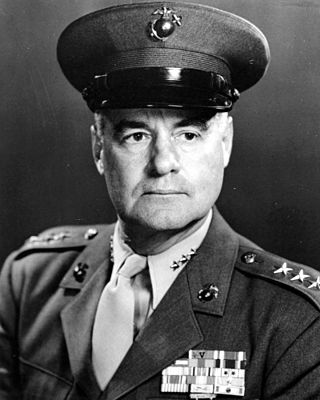
General Merrill Barber Twining was a United States Marine Corps general who received a "tombstone promotion" to four-star general upon retirement. He was the brother of Air Force General Nathan Farragut Twining, and the nephew of Rear Admiral Nathan Crook Twining.

The Military Intelligence Service was a World War II U.S. military unit consisting of two branches, the Japanese American unit and the German-Austrian unit based at Camp Ritchie, best known as the "Ritchie Boys". The unit described here was primarily composed of Nisei who were trained as linguists. Graduates of the MIS language school (MISLS) were attached to other military units to provide translation, interpretation, and interrogation services.
The Pond was a small, secret organization formed by the government of the United States which operated between 1942 and 1955. It engaged in espionage. It was formally acknowledged by the US government in 2001.

John "Frenchy" Grombach, born Jean Valentin de la Salle Grombach, was an American Olympic athlete, soldier, pioneer in radio cryptanalysis personnel management, public broadcaster and radio host, and divergent quick-tempered paranoid spymaster. He was involved in Allied efforts during World War II, and the efforts against the USSR during the Cold War. Director of one of the most secretive intelligence agencies in the world, the name of his intelligence organization, "The Pond,", was not known to the general public until an accidental disclosure of information in 2001. Initially recruited into the Office of the Coordinator of Information by Millard Preston Goodfellow, Chief of communications for William J. "Wild Bill" Donovan, the quick-tempered Grombach would eventually become one of Donovan's harshest critics. In later years, Grombach became a member of the U.S. Olympic Committee, writing and publishing the Olympic Guides for multiple years.
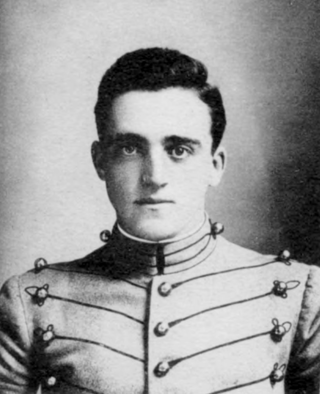
Philip Hayes was a major-general in the U.S. Army. He was the commander of the Third Service Command from 1943 to 1946. Hayes was in charge of the U.S. military's takeover, under the authority of the Smith-Connally Act, of the Philadelphia Transportation Company in August 1944 that brought to an end the Philadelphia transit strike of 1944. Earlier in his career, Hayes served as the chief of staff to Gen. Walter Short, who was the commander of the Hawaiian Department at the time of the Pearl Harbor attack, although Hayes was rotated from Hawaii back to the mainland in November 1941, shortly before the attack.

Major General Sherman Miles was an officer of the United States Army, who was Chief of the Military Intelligence Division in 1941, when the Japanese attack on Pearl Harbor happened, bringing the United States into World War II.
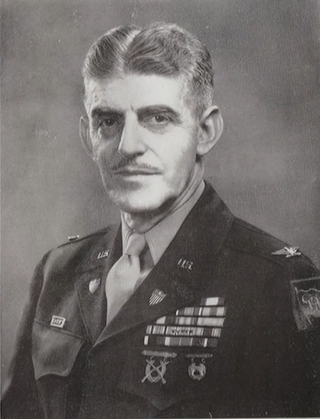
Sidney Forrester Mashbir was a senior officer in the United States Army who was primarily involved in military intelligence. Born in New York, he served in the Arizona Army National Guard during the Mexican-American Border War. Mashbir then held several posts in intelligence positions, taking credit for catching the first German spy in the United States, before departing for on a four-year assignment as a language officer to Japan in 1920. He resigned from the army in 1923 in an attempt to execute his own master plan devised to extract intelligence from Japan in event of a war. His plan failed as a result of the Great Kantō earthquake in September 1923 and he was left bankrupt; he consequently returned to the US as an engineering businessman.

The Military Intelligence Division was the military intelligence branch of the United States Army and United States Department of War from May 1917 to March 1942. It was preceded by the Military Information Division and the General Staff Second Division and in 1942 was reorganised as the Military Intelligence Service.

















